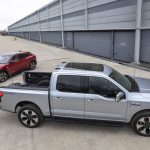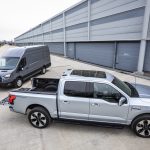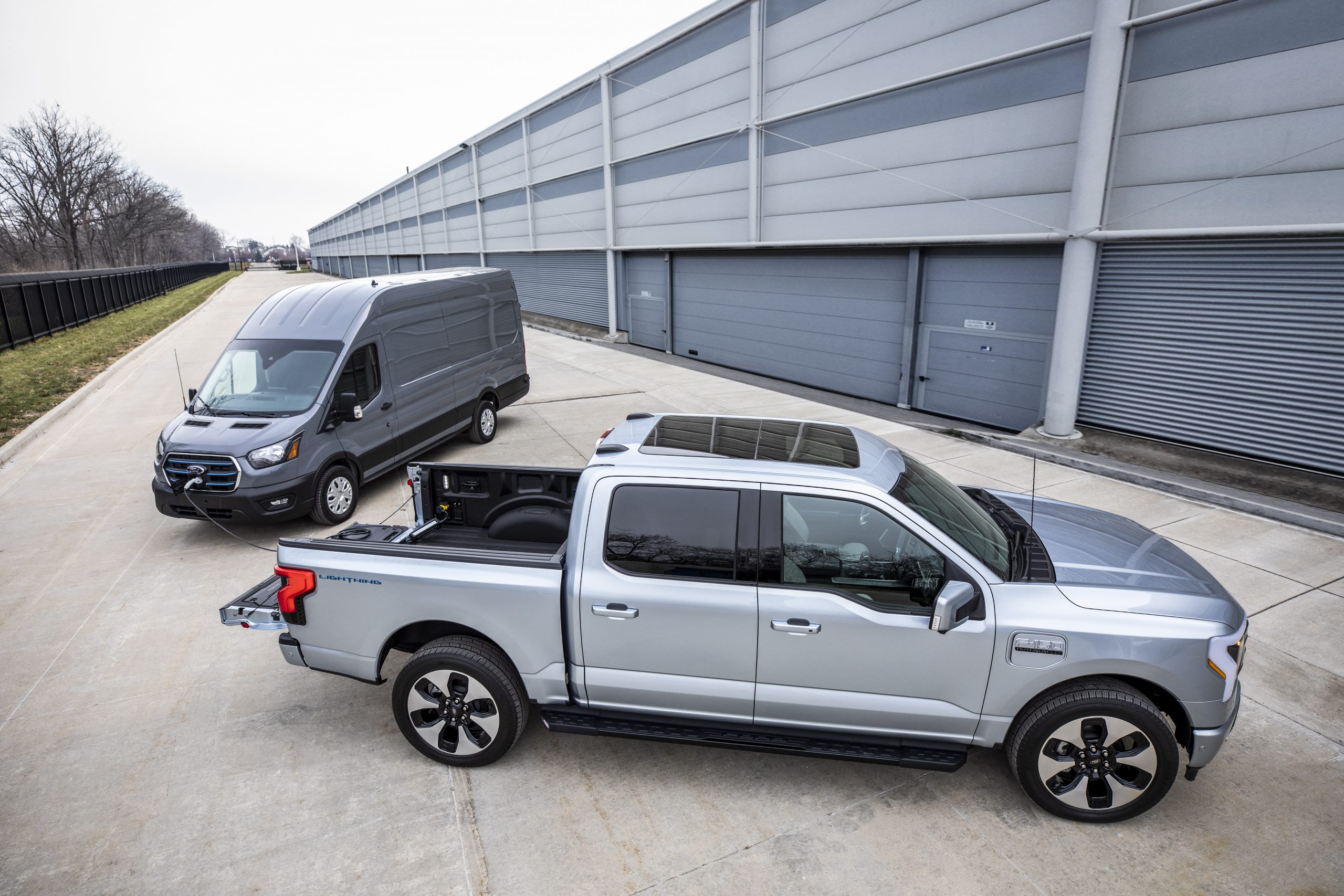
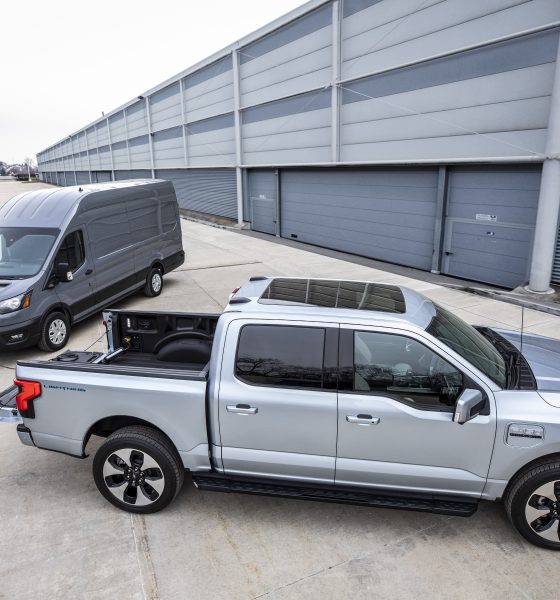
News
Ford shows its awesome Vehicle-to-Vehicle Charging with F-150 Lightning
Thanks to Ford’s Pro Power Onboard system, the 2022 F-150 Lightning, the all-electric version of the United States’ best-selling pickup truck, owners will now have the ability to share range with other EVs.
The feature is exclusive to the Ford F-150 Lightning and F-150 PowerBoost Hybrid, which both equip Pro Power Onboard. The feature essentially turns the vehicles into mobile charging stations for other EVs, as the onboard generators and high-capacity battery systems holding the charge can now give other cars additional range by simply plugging into the host vehicle. It’s not just exclusive for Ford, either, as the company stated in a press release announcing the feature that electric vehicles built by other manufacturers would also benefit from the feature.
- Aftermarket equipment shown. Preproduction Ford F-150 Lightning with optional equipment shown. Available starting spring 2022
- Aftermarket equipment shown. Preproduction Ford F-150 Lightning with optional equipment shown. Available starting spring 2022
- Aftermarket equipment shown. Ford E-Transit available early 2022. Preproduction Ford F-150 Lightning with optional equipment shown. Available starting spring 2022
The process is simple: Connect to an F-150 Lightning or F-150 PowerBoost Hybrid with the optional 9.6 or 7.2 kilowatt Pro Power Onboard feature. By using Ford’s Mobile Power Cord, the vehicle can deliver a Level-2 charging rate that will add an estimated 20 miles of range per hour. This figure was obtained by testing the feature with the Mustang Mach-E, Ford says. The Mach-E that was used to assess the performance of Pro Power Onboard equipped an extended-range battery and rear-wheel-drive. When using the feature with an F-150 Lightning, 13 miles of range was added. 10 additional miles were recorded in an hour with the Ford E-Transit low-roof cargo van. While this doesn’t sound like much, EV charging stations are becoming more available with every passing day. Even a quick charge of 45 minutes would likely get most people with completely depleted vehicles enough range to make it to their closest charging station.
Ford details more about the process for charging vehicles with Pro Power Onboard:
“Customers can easily take advantage of this capability, using a widely available power adaptor to link the Ford Mobile Power Cord to their truck. Once connected to the 240-volt Pro Power Onboard outlet, customers can use the Mobile Power Cord to charge a range of all-electric vehicles that use the SAE J1772 charge port. This includes the Ford Mustang Mach-E, the Ford E-Transit electric van and the all-new 2022 Ford F-150 Lightning electric pickup, as well as vehicles from other manufacturers.”
Ford F-150 Lightning unveiled: Price, Release date, Range, Features and more
The F-150 Lightning’s versatility as a power source opens the door for the vehicle to do more than just give owners a sustainable pickup. Ford’s Intelligent Backup Power could also be used to bring lights back on inside a home, essentially acting as an energy storage device.
“There are so many new opportunities to innovate with features and functions made possible only through electrification,” Patrick Soderborg, Ford E-Powertrain Systems Engineer, said. “This really hit home during the Texas power crisis last February, which left millions in the cold. F-150 Hybrid helped many Texans keep warm and powered up during those difficult times thanks to Pro Power Onboard – and we’re trying to do even more with F-150 Lightning.”
I’d love to hear from you! If you have any comments, concerns, or questions, please email me at joey@teslarati.com. You can also reach me on Twitter @KlenderJoey, or if you have news tips, you can email us at tips@teslarati.com.

News
Wedbush’s Dan Ives sees ‘monster year’ ahead for Tesla amid AI push
In a post on X, the analyst stated that the electric vehicle maker could hit a $3 trillion market cap by the end of 2026 in a bullish scenario.

Wedbush analyst Dan Ives is doubling down on Tesla’s (NASDAQ:TSLA) long-term upside. In a post on X, the analyst stated that the electric vehicle maker could hit a $3 trillion market cap by the end of 2026 in a bullish scenario, thanks to the company’s efforts to develop and push its artificial intelligence programs.
An aggressive valuation upside
Ives, Wedbush’s global head of tech research, stated in his post that Tesla is entering a pivotal period as its autonomy and robotics ambitions move closer to commercialization. He expects Tesla’s market cap to reach $2 trillion in 2026, representing roughly 33% upside from current levels, with a bull case up to a $3 trillion market cap by year-end.
Overall, Ives noted that 2026 could become a “monster year” for TSLA. “Heading into 2026, this marks a monster year ahead for Tesla/Musk as the autonomous and robotics chapter begins. We believe Tesla hits a $2 trillion market cap in 2026 and in a bull case scenario $3 trillion by end of 2026… as the AI chapter takes hold at TSLA,” the analyst wrote.
Ives also reiterated his “Outperform” rating on TSLA stock, as well as his $600 per share price target.
Unsupervised Full-Self Driving tests
Fueling optimism is Tesla’s recent autonomous vehicle testing in Austin, Texas. Over the weekend, at least two Tesla Model Ys were spotted driving on public roads without a safety monitor or any other occupants. CEO Elon Musk later confirmed the footage of one of the vehicles on X, writing in a post that “testing is underway with no occupant in the car.”
It remains unclear whether the vehicle was supported by chase cars or remote monitoring, and Tesla has not disclosed how many vehicles are involved. That being said, Elon Musk stated a week ago that Tesla would be removing its Safety Monitors from its vehicles “within the next three weeks.” Based on the driverless vehicles’ sightings so far, it appears that Musk’s estimate may be right on the mark, at least for now.
News
Production-ready Tesla Cybercab hits showroom floor in San Jose
Tesla has implemented subtle but significant updates to both the Cybercab’s exterior and interior elements.
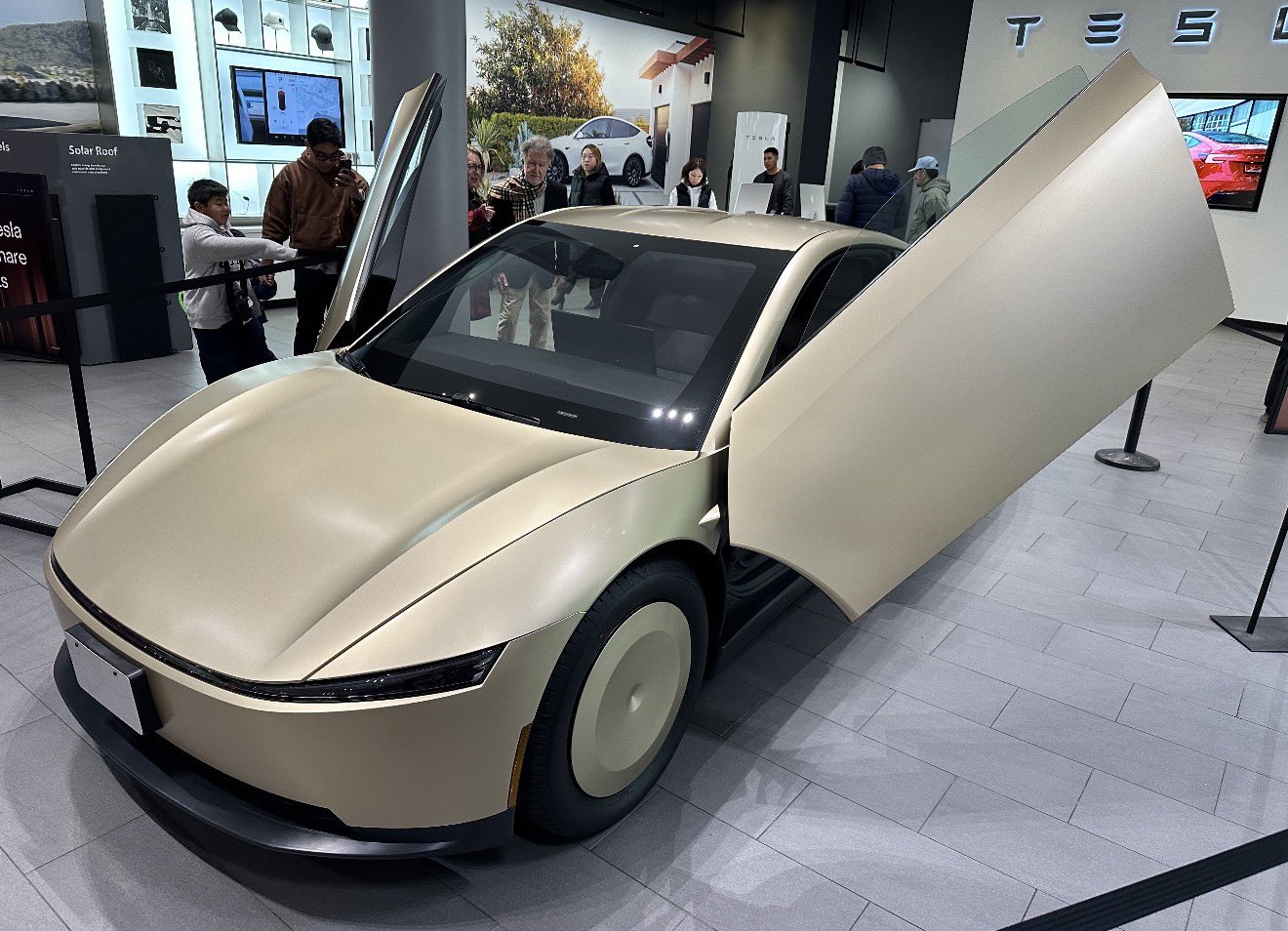
Tesla has showcased what appears to be a near-production-ready Cybercab at its Santana Row showroom in San Jose, California, giving visitors the closest look yet at the autonomous two-seater’s refined design.
Based on photos of the near-production-ready vehicle, the electric vehicle maker has implemented subtle but significant updates to both the Cybercab’s exterior and interior elements, making the vehicle look more polished and seemingly more comfortable than its prototypes from last year.
Exterior and interior refinements
The updated Cybercab, whose photos were initially shared by Tesla advocate Nic Cruz Patane, now features a new frameless window design, an extended bottom splitter on the front bumper, and a slightly updated rear hatch. It also includes a production-spec front lightbar with integrated headlights, new wheel covers, and a license plate bracket.
Notably, the vehicle now has two windshield wipers instead of the prototype’s single unit, along with powered door struts, seemingly for smoother opening of its butterfly doors. Inside, the Cybercab now sports what appears to be a redesigned dash and door panels, updated carpet material, and slightly refined seat cushions with new center cupholders. Its legroom seems to have gotten slightly larger as well.
Cybercab sightings
Sightings of the updated Cybercab have been abundant in recent months. At the end of October, the Tesla AI team teased some of the autonomous two-seater’s updates after it showed a photo of the vehicle being driven through an In-N-Out drive-through by employees in Halloween costumes. The photos of the Cybercab were fun, but they were significant, with longtime Tesla watchers noting that the company has a tradition of driving its prototypes through the fast food chain’s drive-throughs.
Even at the time, Tesla enthusiasts noticed that the Cybercab had received some design changes, such as segmented DRLs and headlamps, actual turn signals, and a splitter that’s a lot sharper. Larger door openings, which now seem to have been teasing the vehicle’s updated cabin, were also observed at the time.
Investor's Corner
Tesla analyst realizes one big thing about the stock: deliveries are losing importance
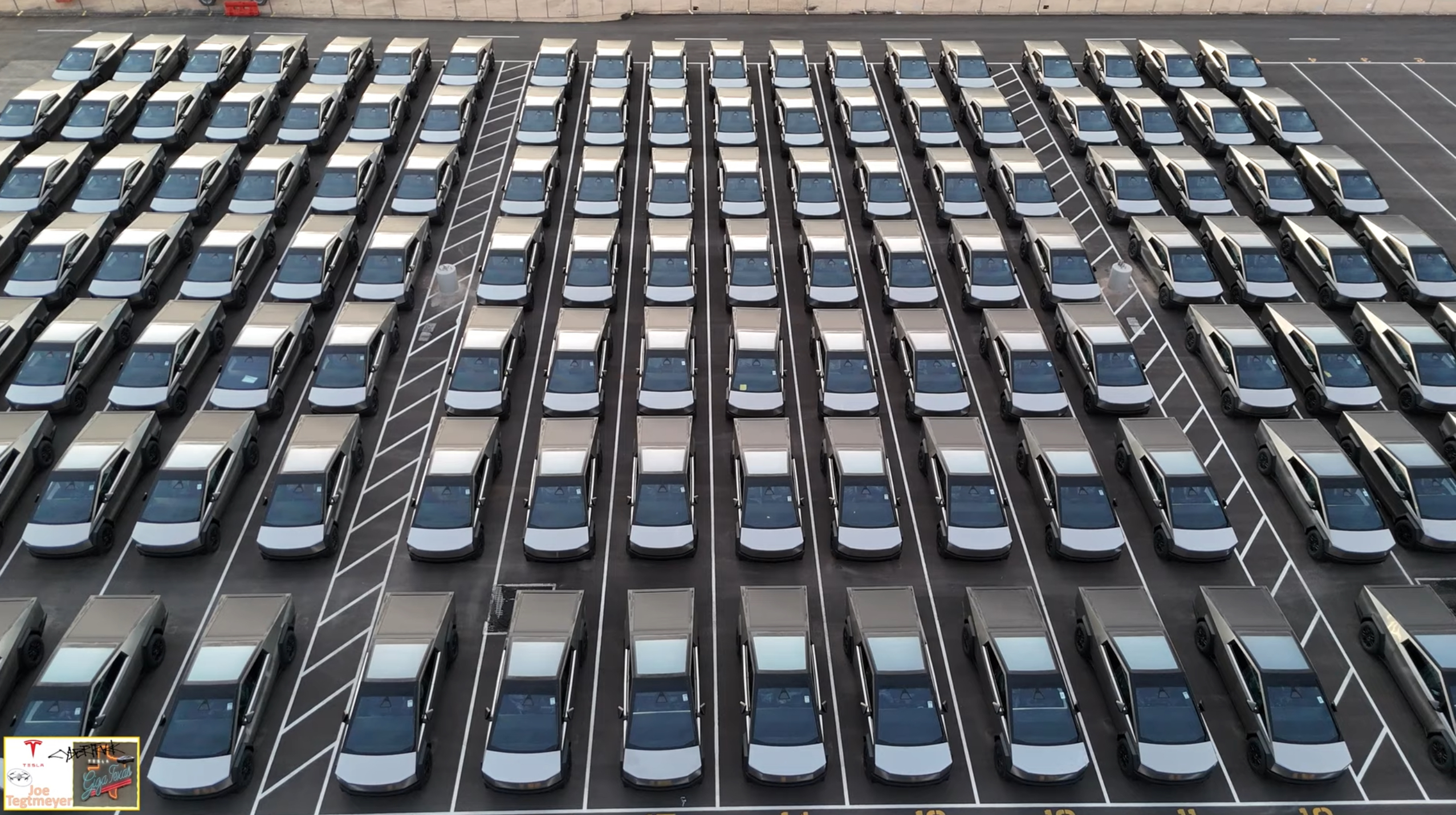
Tesla analyst Dan Levy of Barclays realized one big thing about the stock moving into 2026: vehicle deliveries are losing importance.
As a new era of Tesla seems to be on the horizon, the concern about vehicle deliveries and annual growth seems to be fading, at least according to many investors.
Even CEO Elon Musk has implied at times that the automotive side, as a whole, will only make up a small percentage of Tesla’s total valuation, as Optimus and AI begin to shine with importance.
He said in April:
“The future of the company is fundamentally based on large-scale autonomous cars and large-scale and large volume, vast numbers of autonomous humanoid robots.”
Almost all of Tesla’s value long-term will be from AI & robots, both vehicle & humanoid
— Elon Musk (@elonmusk) September 11, 2023
Levy wrote in a note to investors that Tesla’s Q4 delivery figures “likely won’t matter for the stock.” Barclays said in the note that it expects deliveries to be “soft” for the quarter.
In years past, Tesla analysts, investors, and fans were focused on automotive growth.
Cars were truly the biggest thing the stock had to offer: Tesla was a growing automotive company with a lot of prowess in AI and software, but deliveries held the most impact, along with vehicle pricing. These types of things had huge impacts on the stock years ago.
In fact, several large swings occurred because of Tesla either beating or missing delivery estimates:
- January 3, 2022: +13.53%, record deliveries at the time
- January 3, 2023: -12.24%, missed deliveries
- July 2, 2024: +10.20%, beat delivery expectations
- October 3, 2022: -8.61%, sharp miss due to Shanghai factory shutdown
- July 2, 2020: +7.95%, topped low COVID-era expectations with sizeable beat on deliveries
It has become more apparent over the past few quarters that delivery estimates have significantly less focus from investors, who are instead looking for progress in AI, Optimus, Cybercab, and other projects.
These things are the future of the company, and although Tesla will always sell cars, the stock is more impacted by the software the vehicle is running, and not necessarily the vehicle itself.

